What does a surveillance state look like? That is the question photographer and "experimental geographer" Trevor Paglen tries to address in his recent projects.
On a chilly January night in Toronto I lined up with other art and politics aficionados to hear a talk by artist and “experimental geographer” Trevor Paglen. His mission? Making art out of government secrets. Paglen uses photography to explore state surveillance, military symbology and other subjects.
In addition to his other work, Paglen contributed cinematography for Citizen Four, Laura Poitras’s documentary about Edward Snowden, the American whistleblower who leaked inside information about the widespread secret surveillance practices of the U.S.’s National Security Agency (NSA).
The revelations that continue to emerge from the Snowden leaks have exposed the sheer magnitude of the data being collected by (and shared among) intelligence agencies; they have changed the discourse around state surveillance. Individuals woke up to the impact of these practices on their own lives. Civil society organisations mobilised, drawing up principles to apply international human rights law to government surveillance. In April 2014, The Guardian and the Washington Post were awarded the highest accolade in US journalism, winning the Pulitzer prize for public service for their groundbreaking reports on the Snowden leaks. And in the latest vindication of Snowden’s actions, a few days ago a UK tribunal ruled that British intelligence services acted unlawfully in accessing millions of people’s personal communications collected by the NSA.
Despite the increased public scrutiny, as Paglen noted, there is “little visual material among the blizzard of code names, PowerPoint slides, court rulings and spreadsheets that have emerged from the NSA’s files” leaked by Snowden.
So what does a surveillance state look like? That is the question Paglen’s work tries to address.
Mapping the surveillance world, post-Snowden
“Although the organizing logic of [the USA’s] surveillance apparatus is invisibility and secrecy, its operations occupy the physical world. Digital surveillance programs require concrete data centers; intelligence agencies are based in real buildings; surveillance systems ultimately consist of technologies, people, and the vast network of material resources that supports them. If we look in the right places at the right times, we can begin to glimpse America’s vast intelligence infrastructure.”
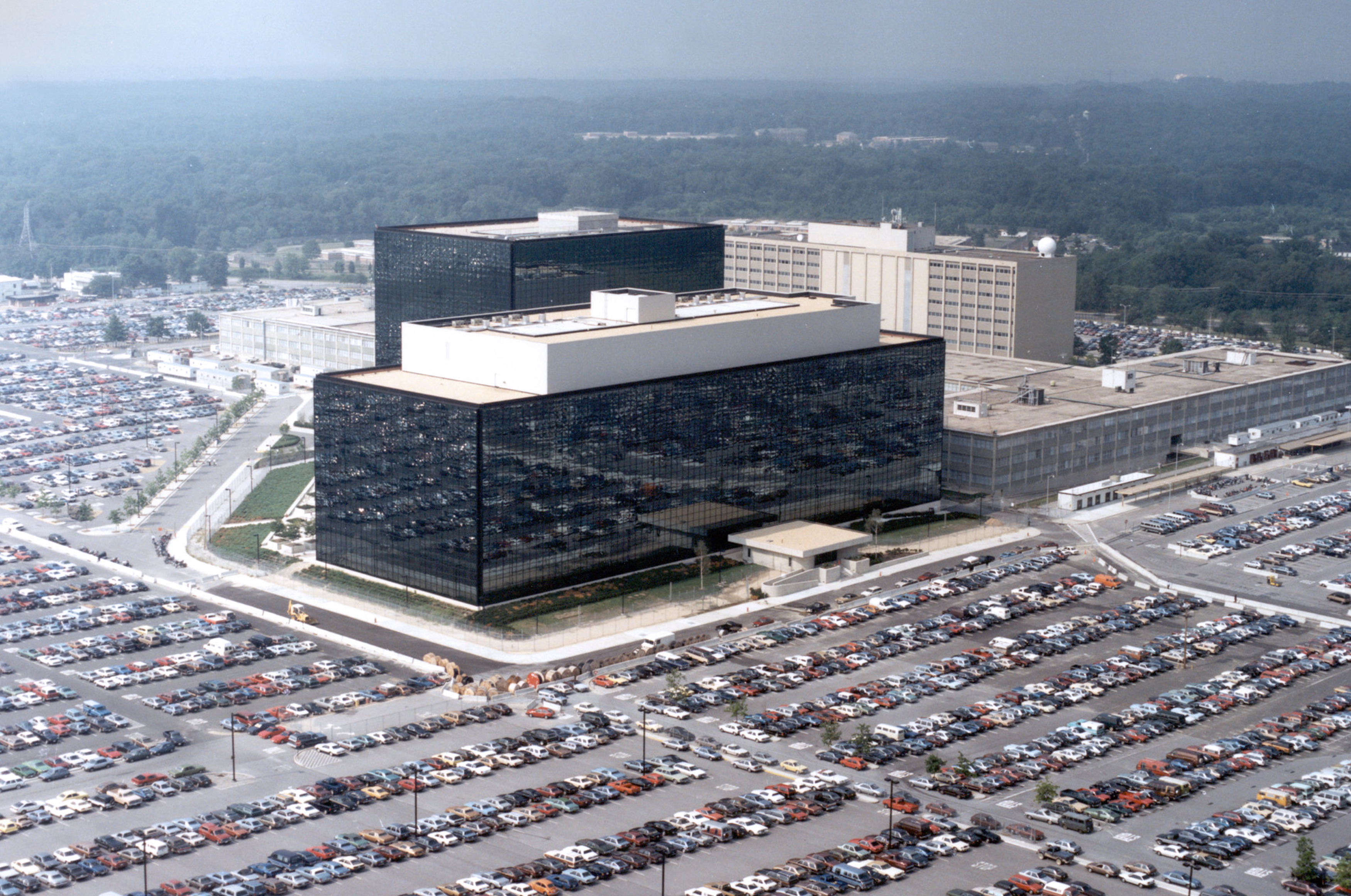
An undated aerial handout photo shows the NSA headquarters building in Fort Meade, MarylandREUTERS/NSA/Handout via Reuters
After June 2013, article after article about the NSA was illustrated with a single ubiquitous image provided by the agency of its Fort Meade Headquarters in Maryland. As Paglen explained during his talk in Toronto, closer observation of the vehicles in the parking lot suggests that the photo likely dates from the 1970s.
In November 2013 Paglen hired a helicopter and took some stark, aerial shots at night of the NSA headquarters, the National Reconnaissance Office (NRO) and the National Geospatial-Intelligence Agency (NGA).
There is a lot less press about the latter two institutions but they are key to the surveillance conversation as the NRO develops, deploys and operates the USA’s reconnaissance satellites, while the NGA collects and analyses intelligence derived from imagery.
According to Paglen, the Central Intelligence Agency – the largest member of the intelligence community – denied repeated requests for permission to take aerial photos of its headquarters in Langley, Virginia.
Paglen published the three images online in February 2014, making them freely available on Flickr and Wikimedia Commons, and encouraging others to share them widely.
Gallery of Paglen’s images of the NSA, NRO and NGA
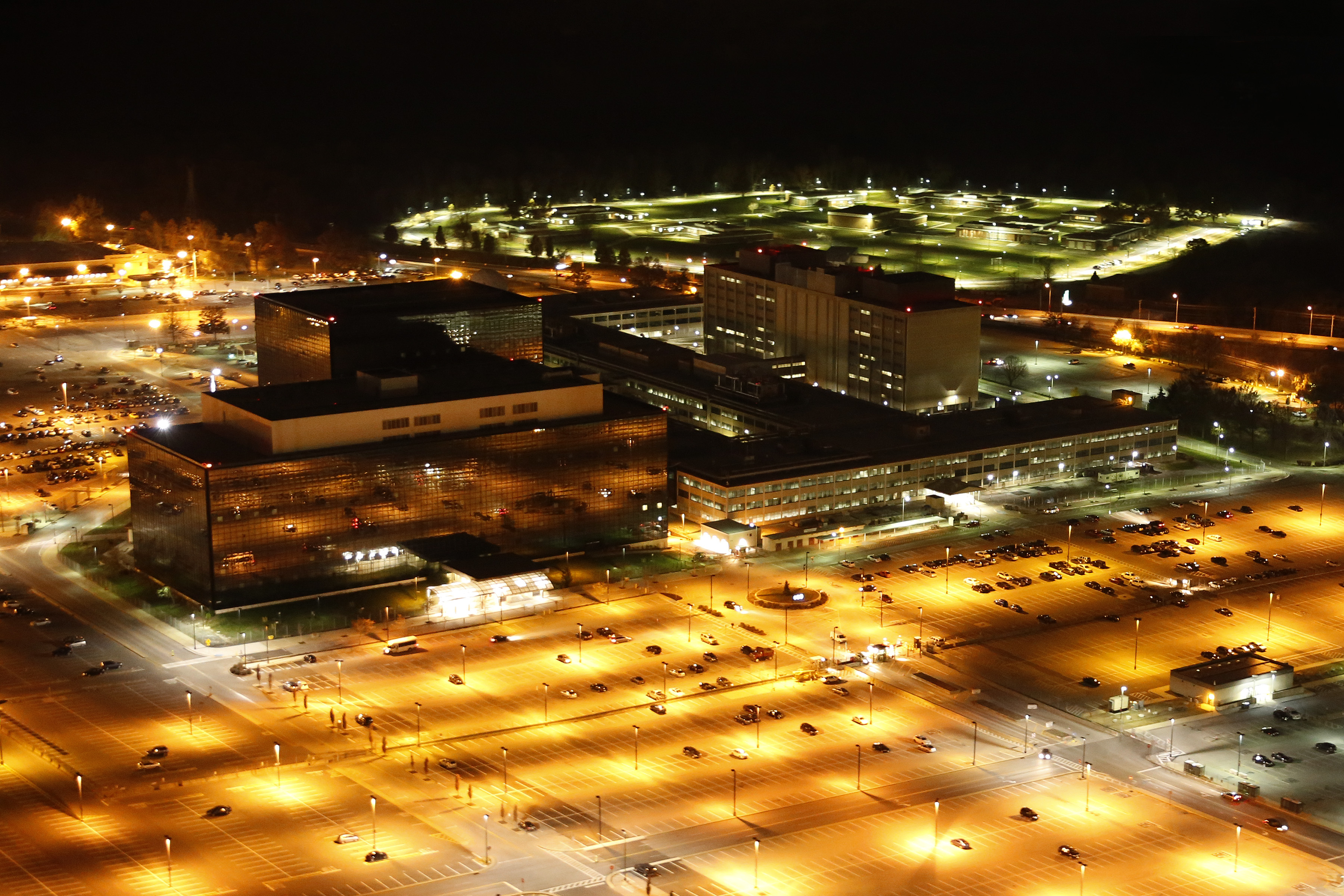
With a 2013 budget request of approximately $10.8 billion, the NSA is the second-largest agency in the U.S. intelligence community. It is headquartered in Fort Meade, MarylandBy Trevor Paglen (Own work) [CC0], via Wikimedia Commons
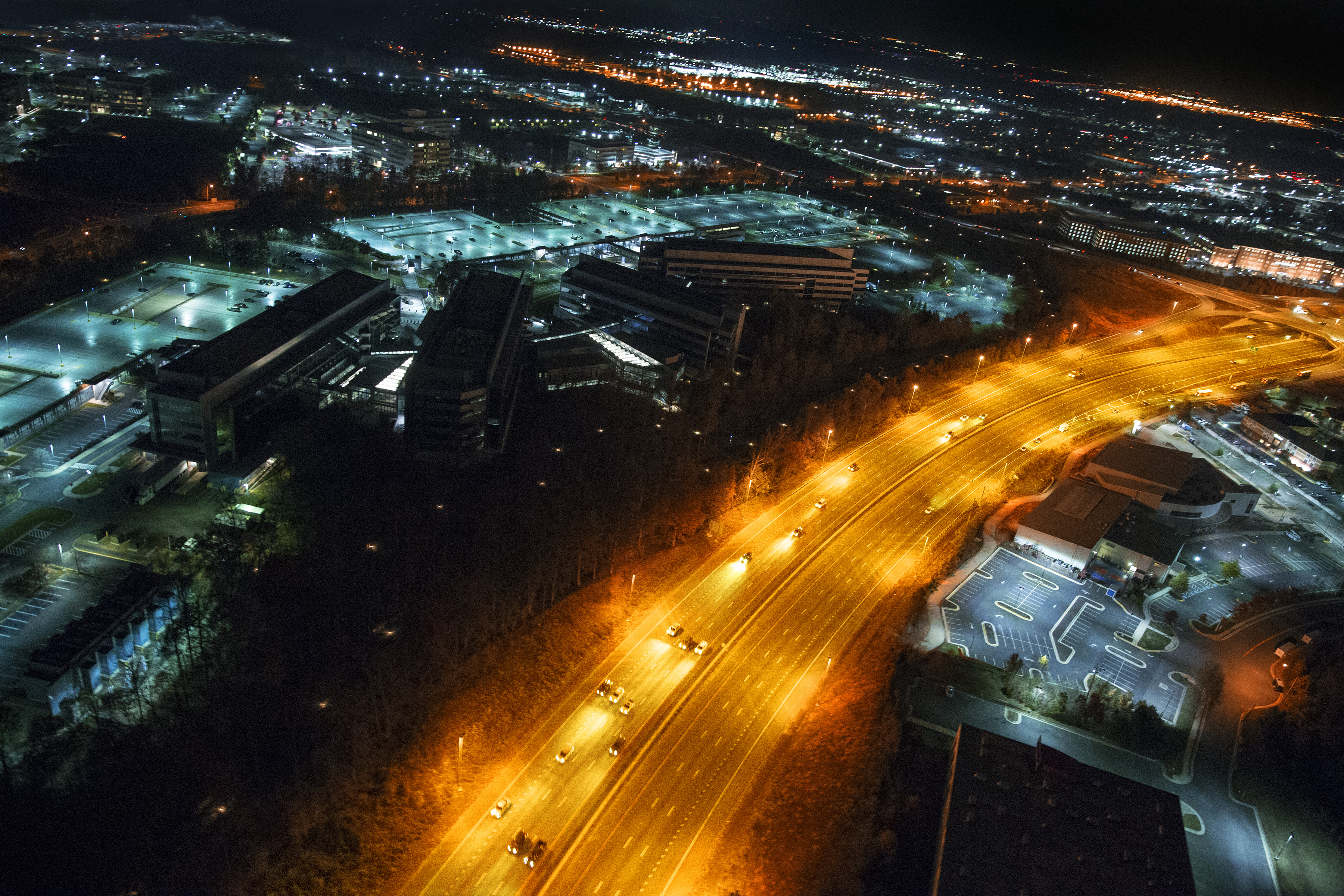
With a budget allocation of $10.3 billion, the NRO is the third-largest U.S. intelligence agency. Its headquarters are in Chantilly, VirginiaBy Trevor Paglen (Own work) [CC0], via Wikimedia Commons

According to documents provided by Snowden, the NGA’s 2013 budget request was $4.9 billion – more than double its funding a decade ago. It is headquartered in Springfield, Virginia.By Trevor Paglen (Own work) [CC0], via Wikimedia Commons
As Paglen stated during an interview, “… when I see the images, I’m reminded to think about the existence of the secret state, and I’m reminded to think about how its existence impacts society at large.”
The images are meant to put a face to the name by showing us the labyrinthine edifices and expansive grounds of the intelligence agencies we may hear about, but rarely see. They also point to the massive scale of their operations, something which was hidden from the public until August 2013 when their classified budget requests were revealed in documents provided by Snowden. Their combined budget request was more than $25bn in that year alone, and, as Paglen noted during his Toronto talk, this number may not include the monies given to secondary providers who manufacture some of the surveillance apparatus.
“Thinking about how to shoot the buildings was a real challenge . . . [I] realized that, at night, the parking lot would be brightly lit up and the building itself would form a kind of negative space in relation to that light. That seemed like a nice little analogy for what the NSA does, so I tried to shoot it that way. Similar things happened with the NRO and NGA. The NGA in particular looked at night like some kind of bioluminescent jellyfish in the deep sea.”
Satellites and Silly Sausage
A few months after these photos were published online, a video installation by Paglen began popping up in the UK. “Code Names of the Surveillance State” is composed of more than 4,000 surveillance programme code names used by the NSA and the GCHQ [Government Communications Headquarters, UK intelligence agency]. The names were projected as an endlessly scrolling list of columns on the walls of the British Parliament buildings and have since been exhibited in London and New York. According to the project’s explanatory text:
“The code names are deliberately nonsensical, often droll and sardonic words or short phrases without discernable connection to the programs they designate. ‘Bacon Ridge’ is an NSA installation in Texas, ‘Fox Acid’ an NSA-controlled Internet server designed to inject malware into unsuspecting web browsers, and ‘Mystic’ a program to collect every phone call from the Bahamas.”
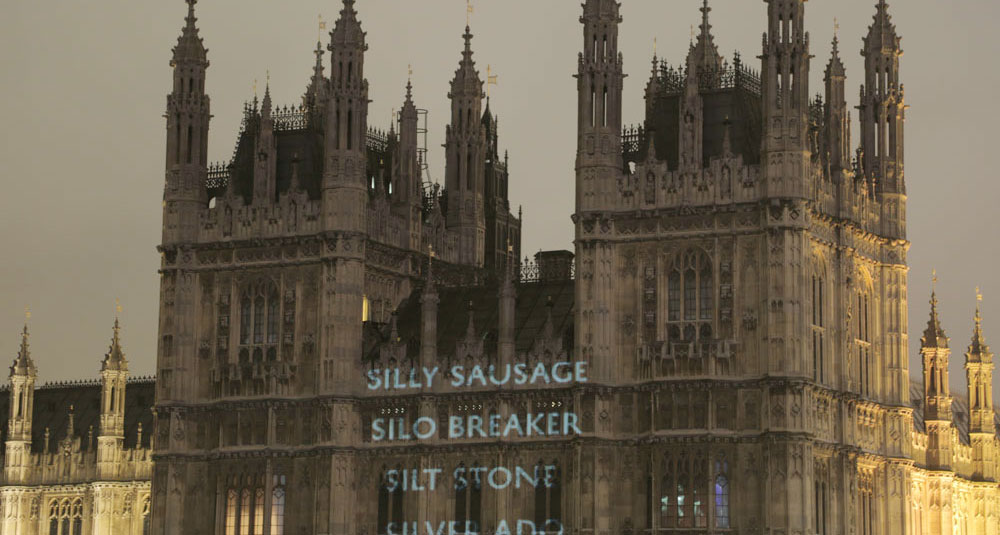
Code Names of the Surveillance State projected on the British Parliament Buildings, November 2014 https://imgur.com/JIRpTFh,fLYuspJ,Bn4goif,FubPG6T,Ap23Mir#0
Another of Paglen’s ongoing projects documents U.S. secret military and intelligence satellites as they move through the sky. He relies for this on the work of amateur astronomers around the world who monitor and record unacknowledged objects. Paglen then uses their information to photograph a satellite’s orbit and includes the images in his work, “The Other Night Sky”.
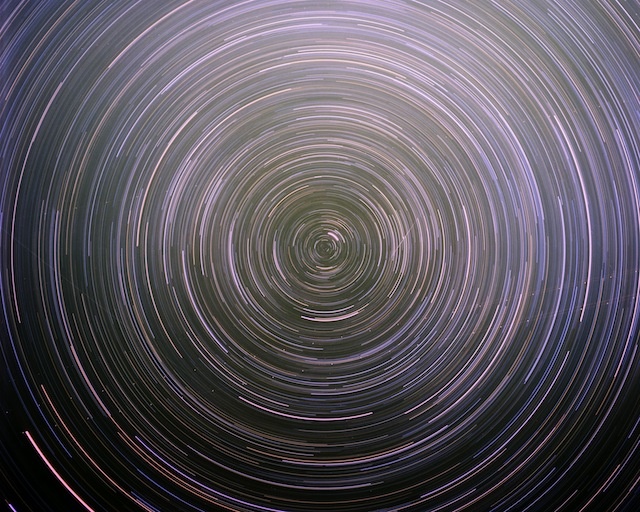
Nine reconnaissance satellites over the Sonora Pass, 2008https://thecreatorsproject.vice.com/blog/trevor-paglen-documents-the-invisible-and-analyzes-government-secrecy-through-photography
A digital pioneer
Some of Paglen’s earlier work explored other kinds of government secrecy, such as the use of drones, or badges handed out to participants in military missions. Initially, people had a hard time categorising his work, arguing that it was neither art nor journalism. Today Paglen’s work is widely accepted and other artists have begun working with the surveillance state as subject matter. In August 2014, he was the first artist to receive a Pioneer Award from the San Francisco-based digital rights organisation the Electronic Frontier Foundation (EFF).
You can follow Paglen’s mission to “map the surveillance world, post-Snowden” through his website and Twitter account. He has recently been tweeting more of those surveillance programme code names – Chaotic Stormtrooper, Vulcan Deathgrip, Samurai Seapig – an ongoing reminder of the practices that Paglen refuses to allow to remain hidden, away from the light.
![With a budget allocation of $10.3 billion, the NRO is the third-largest U.S. intelligence agency. Its headquarters are in Chantilly, Virginia, By Trevor Paglen (Own work) [CC0], via Wikimedia Commons](https://ifex.org/wp-content/uploads/2019/03/international_nro_trevor_paglen2.jpg)